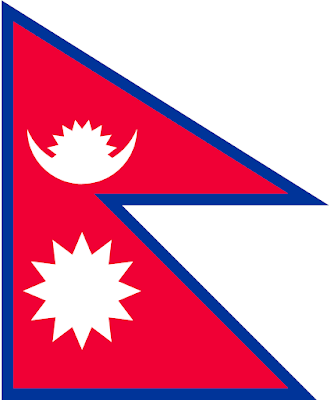There are no written rules about what a national flag should look like. That is why we can observe truly original designs with different number of stripes, colours and additional elements. However, all of them share one characteristic: they have a rectangular shape.
Well, actually not all of them. There is a sovereign country whose flag doesn't follow the pattern: Nepal. If you have played Kobadoo Flags before you are probably familiar with it.
This beautiful flag is a combination of two pennons used in the past by rival branches of the ruling dynasty. The red colour is a symbol of bravery of Nepali people and it is also the colour of Nepal's national flower: rhododendron. The blue border represents peace and harmony.
The crescent moon on the top pennon symbolizes the coldness near Himalayas and the pure spirit of Nepali people; whereas the sun represents the heat of the southern provinces and the fierceness of the locals.
The crescent moon on the top pennon symbolizes the coldness near Himalayas and the pure spirit of Nepali people; whereas the sun represents the heat of the southern provinces and the fierceness of the locals.
